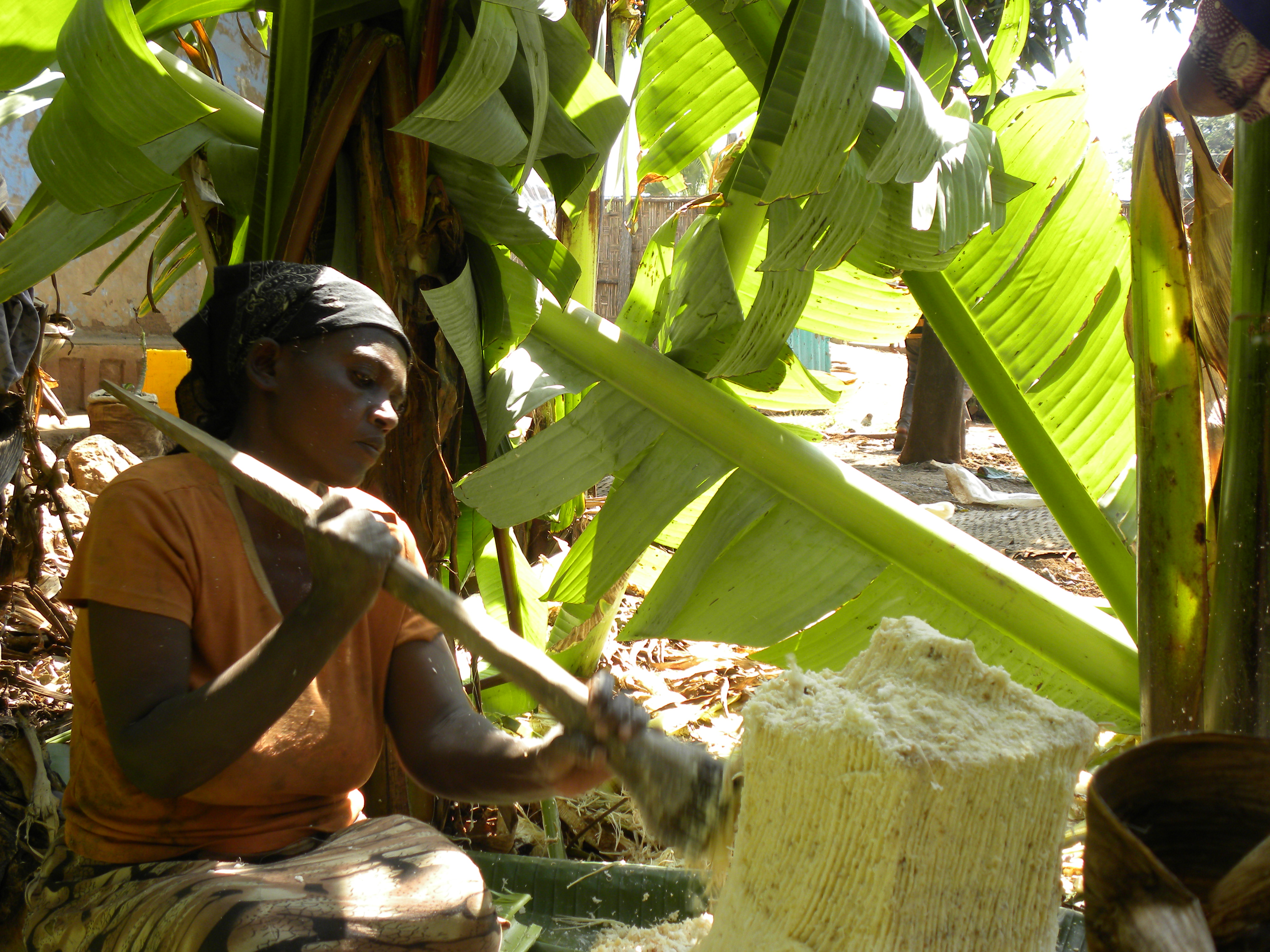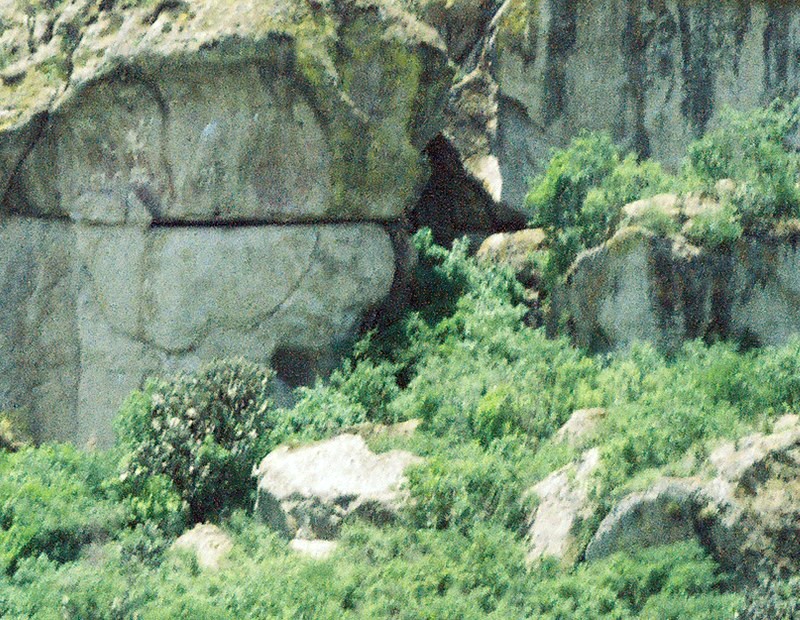|
Dita Dermalo
Dita Dermalo was one of the 77 woredas in the Southern Nations, Nationalities, and Peoples' Region of Ethiopia. Part of the Gamo Gofa Zone, Dita Dermalo was bordered on the south by Bonke, on the southwest by Kemba, on the west by Zala Ubamale, on the north by Kucha, and on the east by Chencha. Towns in Dita Dermalo included Wacha and Zeda. Dita Dermalo was separated to Dita and Deramalo woredas. Overview Rivers in this woreda include the Zage. Dita Dermalo is part of a region known for hilly and undulating midland and upper lowland terrain; due to terrain and weather patterns, less than one in five households is food secure. Food crops include maize, enset, sweet potatoes, taro, teff, and yams; income sources include butter and selling firewood. Although this woreda was in existence before the incorporation of the Federal Democratic Republic of Ethiopia under the name of "Dita", its current area dates from 1996. That year the adjacent woreda of "Dera-Malo" lost its lowlands to ... [...More Info...] [...Related Items...] OR: [Wikipedia] [Google] [Baidu] |
Woreda
Districts of Ethiopia, also called woredas ( am, ወረዳ; ''woreda''), are the third level of the administrative divisions of Ethiopia – after '' zones'' and the '' regional states''. These districts are further subdivided into a number of wards called ''kebele'' neighbourhood associations, which are the smallest unit of local government in Ethiopia. Overview Districts are typically collected together into zones, which form a region; districts which are not part of a zone are designated Special Districts and function as autonomous entities. Districts are governed by a council whose members are directly elected to represent each ''kebele'' in the district. There are about 670 rural districts and about 100 urban districts. Terminology varies, with some people considering the urban units to be ''woreda'', while others consider only the rural units to be ''woreda'', referring to the others as urban or city administrations. Although some districts can be traced back to earli ... [...More Info...] [...Related Items...] OR: [Wikipedia] [Google] [Baidu] |
Dita (woreda)
Dita is one of the woredas in the Southern Nations, Nationalities, and Peoples' Region of Ethiopia. Part of the Gamo Gofa Zone, Dita is bordered on the south by Arba Minch Zuria and Bonke, on the west by Deramalo, on the north by Kucha, and on the east by Chencha. Towns in Dita include Zeda. Dita was part of former Dita Dermalo woreda. Demographics Based on the 2007 Census conducted by the CSA, this woreda has a total population of 83,987, of whom 39,465 are men and 44,522 women; 2,972 or 3.54% of its population are urban dwellers. The majority of the inhabitants practiced Ethiopian Orthodox Christianity, with 69.11% of the population reporting that belief, 27.76% were Protestants Protestantism is a Christian denomination, branch of Christianity that follows the theological tenets of the Reformation, Protestant Reformation, a movement that began seeking to reform the Catholic Church from within in the 16th century agai ..., and 2.43% practiced traditional beliefs. [...More Info...] [...Related Items...] OR: [Wikipedia] [Google] [Baidu] |
Gamo People
The Gamo people are an Ethiopian ethnic group located in the Gamo Highlands of southern Ethiopia. They are found in more than 40 communities, including Chencha, Bonke, Kucha, Garbansa, Zargula, Kamba, Dorze, Birbir, Ochello, Boroda, Ganta, Gacho Baba, Eligo, Shella, Kolle, Dita, Kogo and Daramalo. Sport Arba Minch Town Football Club(The Crocodiles) is playing in Betking Ethiopian premier league and Gamo Chencha Football Club(The Lions) is playing in Ethiopian Super League. Both are from Gamo zone. History The name "Gamo" means ''lion'', which refers to the group's legacy as one of the Omotic peoples. Along with the Gofa people, they gave their names to Ethiopia's former Gamo-Gofa province. Gofa broke away from the Gamo-Gofa zone in 2019. Language Initially, the word Gamo was thought to be a fruit by foreigners, mainly due to the fact that the Gamo people are known for some of their fruits. The Ethiopian government eventually recognized the language in 2000 to be taught ... [...More Info...] [...Related Items...] OR: [Wikipedia] [Google] [Baidu] |
Central Statistical Agency (Ethiopia)
The Central Statistical Agency (CSA; Amharic: ማዕከላዊ ስታቲስቲክስ ኤጀንሲ) is an agency of the government of Ethiopia designated to provide all surveys and censuses for that country used to monitor economic and social growth, as well as to act as an official training center in that field. It is part of the Ethiopian Ministry of Finance and Economic Development. The Director General of the CSA is Samia Zekaria. Before 9 March 1989 the CSA was known as the Central Statistical Office (CSO). The CSA has 25 branch offices. Besides the capital city of Addis Ababa, the cities and towns with offices are: Ambo, Arba Minch, chiro, Asayita, Assosa, Awasa, Bahir Dar, Debre Berhan, Dessie, Dire Dawa Dire Dawa ( am, ድሬዳዋ, om, Dirree Dhawaa, 3=Place of Remedy; so, Diridhaba, meaning "where Dir hit his spear into the ground" or "The true Dir", ar, ديري داوا,) is a city in eastern Ethiopia near the Oromia and Somali Re ..., Gambela, ... [...More Info...] [...Related Items...] OR: [Wikipedia] [Google] [Baidu] |
Federal Democratic Republic Of Ethiopia
Ethiopia, , om, Itiyoophiyaa, so, Itoobiya, ti, ኢትዮጵያ, Ítiyop'iya, aa, Itiyoppiya officially the Federal Democratic Republic of Ethiopia, is a landlocked country in the Horn of Africa. It shares borders with Eritrea to the north, Djibouti to the northeast, Somalia to the east and northeast, Kenya to the south, South Sudan to the west, and Sudan to the northwest. Ethiopia has a total area of . As of 2022, it is home to around 113.5 million inhabitants, making it the 13th-most populous country in the world and the 2nd-most populous in Africa after Nigeria. The national capital and largest city, Addis Ababa, lies several kilometres west of the East African Rift that splits the country into the African and Somali tectonic plates. Anatomically modern humans emerged from modern-day Ethiopia and set out to the Near East and elsewhere in the Middle Paleolithic period. Southwestern Ethiopia has been proposed as a possible homeland of the Afroasiatic language fam ... [...More Info...] [...Related Items...] OR: [Wikipedia] [Google] [Baidu] |
Teff
''Eragrostis tef'', also known as teff, Williams lovegrass or annual bunch grass, is an annual grass, a species of lovegrass native to the Horn of Africa, notably to both Eritrea and Ethiopia. It is cultivated for its edible seeds, also known as teff. Teff was one of the earliest plants domesticated. It is one of the most important staple crops in Ethiopia and Eritrea. Description ''Eragrostis tef'' is a self pollinated tetraploid annual cereal grass. Teff is a plant, which allows it to more efficiently fix carbon in drought and high temperatures, and is an intermediate between a tropical and temperate grass. The name teff is thought to originate from the Amharic word ''teffa'', which means "lost".Encyclopædia Britannica. (2016) Teff, Grain. URL: https://www.britannica.com/plant/teff (Status: 14.11.2018) This probably refers to its tiny seeds, which have a diameter smaller than 1 mm. Teff is a fine-stemmed, tufted grass with large crowns and many tillers. Its root ... [...More Info...] [...Related Items...] OR: [Wikipedia] [Google] [Baidu] |
Taro
Taro () (''Colocasia esculenta)'' is a root vegetable. It is the most widely cultivated species of several plants in the family Araceae that are used as vegetables for their corms, leaves, and petioles. Taro corms are a food staple in African, Oceanic, and South Asian cultures (similar to yams). Taro is believed to be one of the earliest cultivated plants. Names and etymology The English term '' taro'' was borrowed from the Māori language when Captain Cook first observed ''Colocasia'' plantations there in 1769. The form ''taro'' or ''talo'' is widespread among Polynesian languages:*''talo'': taro (''Colocasia esculenta'') – entry in the ''Polynesian Lexicon Project Online'' (Pollex). in Tahitian; ... [...More Info...] [...Related Items...] OR: [Wikipedia] [Google] [Baidu] |
Enset
''Ensete ventricosum'', commonly known as enset or ensete, Ethiopian banana, Abyssinian banana, pseudo-banana, false banana and wild banana, is an herbaceous species of flowering plant in the banana family Musaceae. The domesticated form of the plant is cultivated only in Ethiopia, where it provides the staple food for approximately 20 million people. The name ''Ensete ventricosum'' was first published in the Kew Bulletin 1947, p. 101. Its synonyms include ''Musa arnoldiana'' De Wild., ''Musa ventricosa'' Welw. and ''Musa ensete'' J. F. Gmelin. In its wild form, it is native to the eastern edge of the Great African Plateau, extending northwards from South Africa through Mozambique, Zimbabwe, Malawi, Kenya, Uganda and Tanzania to Ethiopia, and west to the Congo, being found in high-rainfall forests on mountains, and along forested ravines and streams. Description Like bananas, ''Ensete ventricosum'' is a large non-woody plant—a gigantic monocarpic evergreen perennia ... [...More Info...] [...Related Items...] OR: [Wikipedia] [Google] [Baidu] |
Maize
Maize ( ; ''Zea mays'' subsp. ''mays'', from es, maíz after tnq, mahiz), also known as corn ( North American and Australian English), is a cereal grain first domesticated by indigenous peoples in southern Mexico about 10,000 years ago. The leafy stalk of the plant produces pollen inflorescences (or "tassels") and separate ovuliferous inflorescences called ears that when fertilized yield kernels or seeds, which are fruits. The term ''maize'' is preferred in formal, scientific, and international usage as a common name because it refers specifically to this one grain, unlike ''corn'', which has a complex variety of meanings that vary by context and geographic region. Maize has become a staple food in many parts of the world, with the total production of maize surpassing that of wheat or rice. In addition to being consumed directly by humans (often in the form of masa), maize is also used for corn ethanol, animal feed and other maize products, such as corn starch a ... [...More Info...] [...Related Items...] OR: [Wikipedia] [Google] [Baidu] |
Deramalo
Deramalo is one of the woredas in the Southern Nations, Nationalities, and Peoples' Region of Ethiopia. Part of the Gamo Gofa Zone, Deramalo is bordered on the southeast by Bonke, on the southwest by Kemba, on the west by Zala, on the north by Kucha, and on the east by Dita. Towns in Deramalo include Wacha. Deramalo was part of former Dita Dermalo woreda. Demographics Based on the 2007 Census conducted by the CSA, this woreda has a total population of 81,025, of whom 41,618 are men and 39,407 women; 3,220 or 3.97% of its population are urban dwellers. The majority of the inhabitants were Protestants, with 46.02% of the population reporting that belief, 33.01% practiced Ethiopian Orthodox Christianity The Ethiopian Orthodox Tewahedo Church ( am, የኢትዮጵያ ኦርቶዶክስ ተዋሕዶ ቤተ ክርስቲያን, ''Yäityop'ya ortodoks täwahedo bétäkrestyan'') is the largest of the Oriental Orthodox Churches. One of the few Chris ..., and 17.07% practiced tradi ... [...More Info...] [...Related Items...] OR: [Wikipedia] [Google] [Baidu] |
Southern Nations, Nationalities, And Peoples' Region
The Southern Nations, Nationalities, and Peoples' Region (often abbreviated as SNNPR; am, የደቡብ ብሔር ብሔረሰቦችና ሕዝቦች ክልል, Yädäbub Bḥer Bḥeräsäbočna Hzboč Kllə) is a regional state in southwestern Ethiopia. It was formed from the merger of five ''kililoch'', called Regions 7 to 11, following the regional council elections on 21 June 1992. Its government is based in Hawassa. The SNNPR borders Kenya to the south (including a small part of Lake Turkana), the Ilemi Triangle (a region claimed by Kenya and South Sudan) to the southwest, the South West Ethiopia Region to the west, the Oromia Region to the north and east, and the Sidama Region to the east. The region's major cities and towns include Arba Minch, Sodo, Jinka, Dila, Boditi, Areka, Butajira, Welkite, Bonga, Hosaena and Worabe. The regional government of the Southern Nations, Nationalities, and Peoples' Region is based in the city of Hawassa. Following the formation ... [...More Info...] [...Related Items...] OR: [Wikipedia] [Google] [Baidu] |



